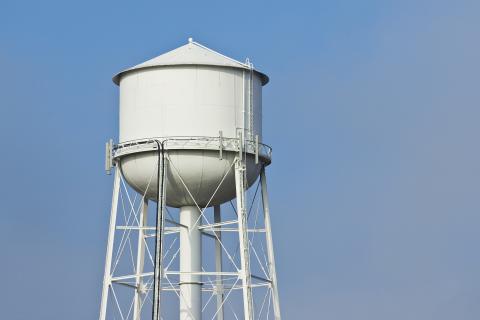Drinking Water: Public Water Systems
About 70% of Wisconsinites get their drinking water from a public water system.
What is a public water system?
A public water system is a way to access drinking water. A system is "public" if it has at least 15 service connections or serves an average of at least 25 individuals daily at least 60 days out of the year. About 70% of Wisconsinites get their drinking water from a public water system.
The Safe Drinking Water Act requires that public water systems test for contaminants regularly and take action if contaminant levels are too high. In Wisconsin, the Department of Natural Resources (DNR) oversees the administration of these requirements.
While most drinking water in Wisconsin is safe to drink, it is important to learn about the quality of your drinking water and follow any actions recommended by the public water system.
How can I learn about my water quality?
Public water systems are required to develop a consumer confidence report each year. This report describes where the drinking water comes from, what contaminants are detected and their potential health effects, and if there are any standards violations. Check your water utility's webpage or contact them to get a copy of your consumer confidence report.
What substances can be in my drinking water?
Sometimes drinking water can be affected by bacteria. If this happens, the water system will issue a boil water notice. A water system will also issue a boil water notice if the water pressure is low due to a water main break or other work being done on the system.
Our How to Keep Safe if You Receive a Boil Water Notice Fact Sheet, P-44589 (PDF) has details on how you can protect yourself and your family when a boil water notice is issued.
Fluoride is a naturally occurring mineral that is found in rocks, soil, and water. Low levels of fluoride can prevent cavities and support the development of strong teeth. However, moderate levels of fluoride can change teeth’s appearance in young children and high levels can cause bones to became brittle and fragile.
Because fluoride can prevent tooth decay, some public water systems add fluoride to the drinking water. All community public water systems are required to test for fluoride on a regular basis. You can find your community's fluoride level online.
Our fluoride and community water fluoridation page has more information about fluoride in public water systems.
Lead is a naturally occurring element that used to be added to gasoline, paint and varnishes, plastics, pipes, and some plumbing materials. Lead can affect learning, mental health, and increase the risk of diseases later in life.
Because there is no safe level of lead exposure and lead can be found many plumbing components, we recommend that everyone take steps to reduce their lead exposure. You can find these steps on our lead in water page. Our Lead in Drinking Water Fact Sheet, P-02602 has these steps in a printable format.
Manganese is a common element found in minerals, rocks, and soil. While small amounts of manganese are part of a healthy diet, high levels can affect our health.
Community water systems are required to test for manganese every nine years. If the manganese is level is high, your water systems will issue a do not drink notice. Depending on the level of manganese in the water, the notice may apply to sensitive groups - people over the age of 50 and babies 6 months and younger - or to everyone.
Our manganese page has steps that you can take to protect yourself and your family if this happens. Our Manganese in Public Water Fact Sheet, P-45103B has this information in a printable format.
Per- and polyfluoroalkyl substances (PFAS) are a group of chemicals that have been used in many products for their heat, grease, and water-resistant properties. Studies have shown that exposure to high levels of some PFAS can affect our health.
If PFAS levels in your drinking water are above health guidelines, your water system will issue a public notice. Our PFAS page has information on how you can protect yourself and your family if this happens.
What can I do if there are contaminants in my water?
Drinking water can sometimes have unsafe levels contaminants.
If these levels pose a health risk, the public water system will issue a public notice.
- If a "boil water" notice is issued, the water is not safe to use for drinking or preparing food until it has been boiled for at least one minute.
- If a “do not drink” notice is issued, the water is not safe to use for drinking, making drinks, and preparing foods that take up a lot of water. The water can be used for washing hands and showering.
- If a “do not use” notice is issued, the water is not safe to use for drinking, preparing food, washing hands, showering or other activities that result in contact with the water. These advisories are rare in Wisconsin.
It is important to follow the instructions in the notice to protect yourself and your family. In some cases, the actions recommended by the notice may only apply to certain populations (like babies or pregnant people).
Related topics
Our chemical page has information on the other substances that we can be exposed in drinking water, air, and soil.
DNR's Drinking Water System Portal has contact information and test results for the public water systems in Wisconsin.
DNR's annual drinking water quality reports has links to the most reports summarizing the status of water quality from public systems in the state.
EPA's Understanding Your Water Quality Report infographic describes the required elements of a consumer confidence report and walks through an example data table.
Questions?
Email us at dhsenvhealth@wi.gov if you can't find what you're looking for.

